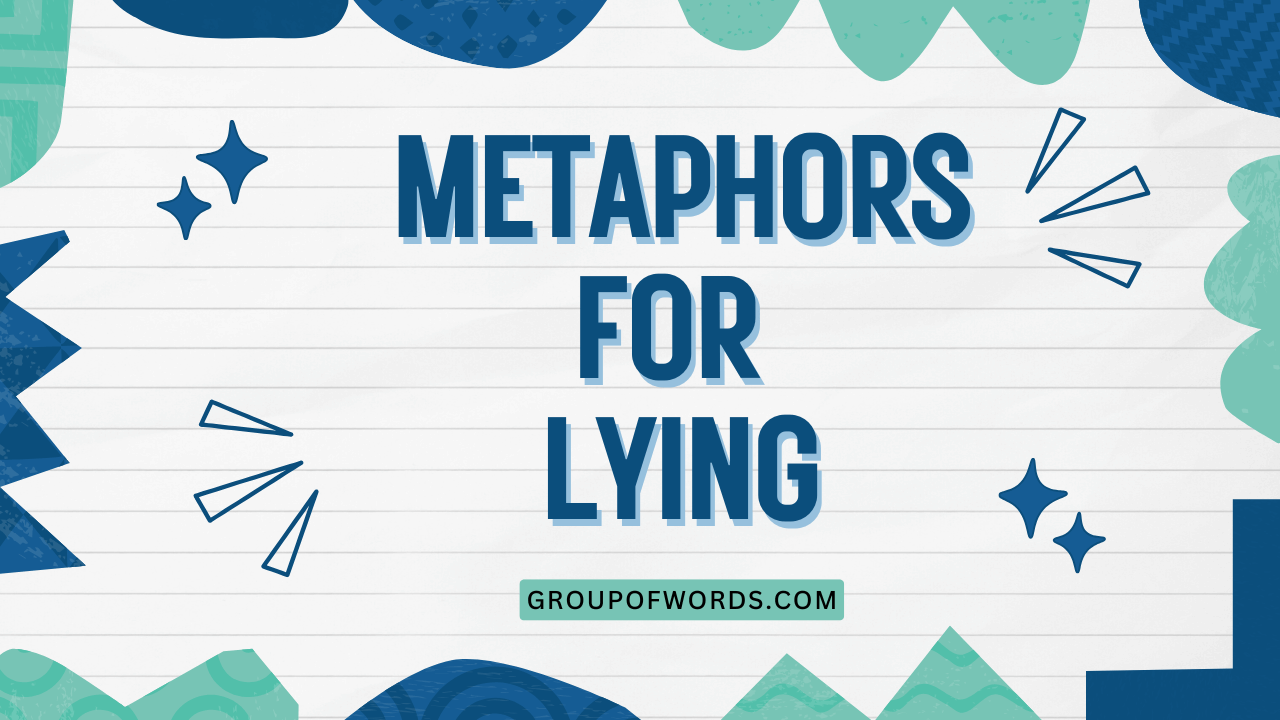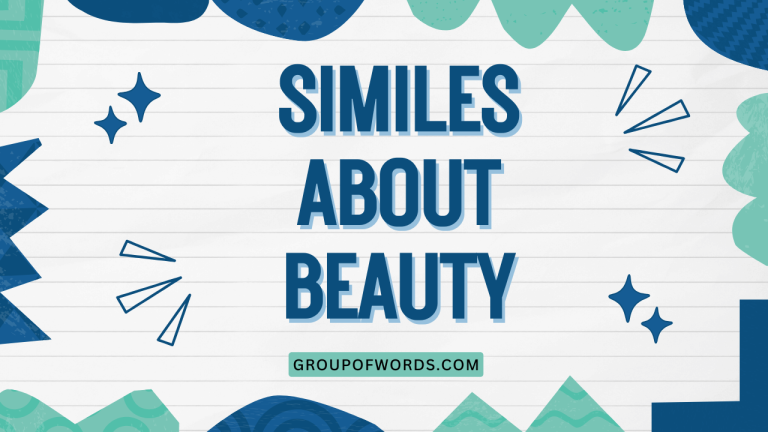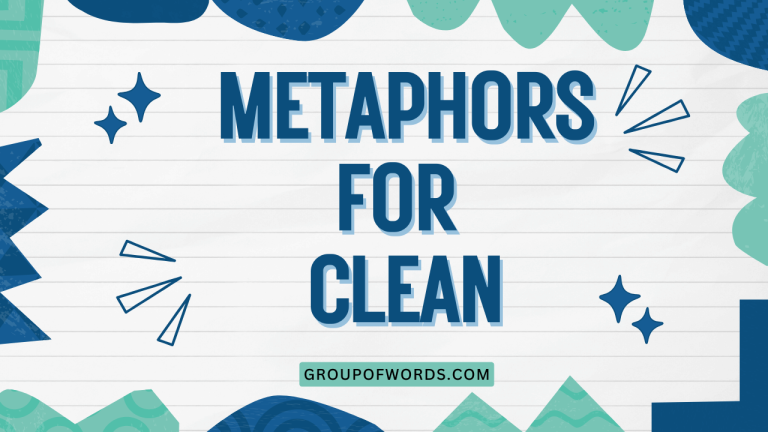Lies in Disguise: Exploring Metaphors for Deception
Understanding how we talk about lying goes beyond simple definitions; it delves into the rich tapestry of metaphorical language. Metaphors for lying offer insight into our perceptions of deceit, revealing cultural attitudes and the emotional weight we assign to dishonesty.
This article is designed to equip English language learners with a comprehensive understanding of these metaphors, enhancing their ability to recognize, interpret, and use them effectively. Whether you’re an ESL student, a writer seeking to add nuance to your prose, or simply curious about the intricacies of language, this guide will illuminate the art of expressing deception through metaphor.
By exploring the different types of metaphors used to describe lying, their structural elements, and usage rules, this article will empower you to navigate the complex landscape of figurative language with confidence. You’ll learn to identify common mistakes, practice using these metaphors in context, and even delve into advanced topics that will further refine your understanding.
Get ready to uncover the hidden meanings behind the words we use to talk about lies.
Table of Contents
- Introduction
- Definition of Metaphors for Lying
- Structural Breakdown of Metaphors
- Types of Metaphors for Lying
- Examples of Metaphors for Lying
- Usage Rules for Metaphors
- Common Mistakes with Metaphors
- Practice Exercises
- Advanced Topics in Metaphorical Language
- Frequently Asked Questions
- Conclusion
Definition of Metaphors for Lying
A metaphor is a figure of speech in which a word or phrase is applied to an object or action to which it is not literally applicable. It’s a comparison that doesn’t use “like” or “as,” but instead states that something is something else to highlight a shared quality. When we talk about “metaphors for lying,” we are referring to the various ways we use figurative language to describe the act of deception, without explicitly stating “he/she lied.”
Metaphors for lying serve several functions. They can soften the bluntness of accusing someone of dishonesty, adding a layer of subtlety and nuance.
They can also convey the speaker’s emotional response to the lie, such as anger, disbelief, or amusement. Furthermore, these metaphors can provide a deeper understanding of the nature of the lie itself, highlighting its complexity, intent, and impact.
These metaphors are classified as figurative language, specifically under the umbrella of rhetoric. Their function is to persuade, to evoke emotion, and to provide a more vivid and memorable description of the act of lying than a literal statement could achieve.
The context in which these metaphors are used is crucial to their interpretation. The speaker’s tone, the relationship between the speaker and the subject, and the overall situation all contribute to the meaning of the metaphor.
Structural Breakdown of Metaphors
Understanding the structure of metaphors, especially those related to lying, involves recognizing the key elements at play. A metaphor essentially consists of two parts: the tenor and the vehicle. The tenor is the subject being described (in this case, the lie or the act of lying), and the vehicle is the object or concept used to describe it.
For example, in the metaphor “He spun a web of deceit,” the tenor is the act of lying, and the vehicle is “spinning a web.” The shared quality between the two is the act of creating something intricate and deceptive to trap someone. The effectiveness of a metaphor lies in the strength and relevance of this shared quality.
The structural pattern of metaphors for lying often involves verbs related to creation, concealment, or manipulation. These verbs are then paired with nouns that evoke images of complexity, fragility, or darkness.
This combination creates a powerful image in the listener’s mind, conveying the nature of the lie in a more impactful way than a simple statement.
Types of Metaphors for Lying
Metaphors for lying can be categorized based on the underlying concept they employ. Here are some common types:
Concealment Metaphors
These metaphors describe lying as an act of hiding or obscuring the truth. They often involve imagery of darkness, veils, or other forms of cover-up.
These metaphors emphasize the intention to keep the truth from being seen or known.
Fabrication Metaphors
Fabrication metaphors portray lying as the act of creating something false. They often involve verbs related to building, weaving, or crafting, suggesting that the lie is a deliberate construction.
These highlight the active role of the liar in inventing a false narrative.
Distortion Metaphors
These metaphors depict lying as a twisting or altering of the truth. They often involve imagery of bending, warping, or exaggerating, suggesting that the lie is a manipulation of reality.
These metaphors emphasize how the truth is altered to serve the liar’s purpose.
Game Metaphors
Game metaphors frame lying as a strategic maneuver or tactic used to gain an advantage. They often involve terms associated with competition, strategy, and deception, suggesting that lying is a calculated move in a larger game.
This category emphasizes the strategic intent behind the lie.
Physical Action Metaphors
Physical action metaphors describe lying through physical actions, suggesting a direct and often forceful manipulation of the truth. These metaphors often involve verbs describing forceful action like pushing, pulling, or throwing, to illustrate the impact and force of the lie.
Examples of Metaphors for Lying
Here are some examples of metaphors for lying, categorized by type. Each example is designed to illustrate the specific concept behind the metaphor and how it conveys the act of deception.
Concealment Examples
The following table provides examples of concealment metaphors. These metaphors describe lying as an act of hiding or obscuring the truth.
| Metaphor | Explanation |
|---|---|
| He shrouded the truth in a veil of secrecy. | The truth is hidden under a layer of secrecy, making it difficult to see. |
| She buried the facts beneath a mountain of excuses. | The facts are hidden under a large number of excuses, making them inaccessible. |
| They masked their intentions with a facade of honesty. | Their true intentions are hidden behind a false appearance of honesty. |
| He cloaked his actions in darkness. | His actions are hidden and mysterious, suggesting wrongdoing. |
| She hid the truth under a rug. | The truth is being deliberately ignored or concealed. |
| The scandal was swept under the carpet. | The scandal was hidden from public view to avoid embarrassment or damage. |
| He concealed his involvement with a web of lies. | His involvement is hidden by a complex network of lies. |
| She obscured the details with vague statements. | The details are made unclear and difficult to understand through vague language. |
| They veiled their true motives. | Their real motives are hidden or disguised. |
| He kept the truth locked away in his heart. | The truth is being deliberately suppressed or kept secret. |
| She camouflaged her deceit with charm. | Her deceit is disguised by her charming personality. |
| He buried the evidence. | The evidence is hidden to prevent it from being discovered. |
| They whitewashed the report. | The report was altered to conceal wrongdoing or minimize damage. |
| She shrouded the event in mystery. | The event is surrounded by secrecy and uncertainty. |
| He covered up his tracks. | He hid the evidence of his actions to avoid being caught. |
| She hid behind a wall of silence. | She refused to speak or provide information, concealing the truth. |
| He masked his fear with bravado. | He hid his fear behind a display of boldness. |
| She concealed her anger with a smile. | She hid her anger by smiling. |
| He kept the secret buried deep. | The secret is well-hidden and unlikely to be revealed. |
| She placed a smokescreen to avoid the truth. | She used obfuscation or deception to hide the truth. |
| He buried the hatchet. | He hid his ill-feelings. |
Fabrication Examples
The following table provides examples of fabrication metaphors. These metaphors portray lying as the act of creating something false.
| Metaphor | Explanation |
|---|---|
| He concocted a story to avoid blame. | He invented a story to escape responsibility. |
| She wove a tale of innocence. | She created a story to appear innocent. |
| They fabricated evidence to support their claim. | They invented false evidence to strengthen their argument. |
| He spun a yarn about his adventures. | He told an exaggerated or fictional story about his experiences. |
| She constructed a false alibi. | She created a fake alibi to prove her innocence. |
| He built a house of cards on lies. | He created a situation built on lies, which is likely to collapse. |
| She painted a rosy picture of the situation. | She created an unrealistically positive depiction of the situation. |
| They invented a reason for their absence. | They created a false reason for being away. |
| He drafted a narrative to deceive them. | He created a story with the intention of deceiving others. |
| She sculpted a persona to impress them. | She created a false image of herself to impress others. |
| He forged a document to get ahead. | He created a fake document to gain an advantage. |
| She designed a plot to ruin him. | She created a plan to destroy his reputation. |
| They composed a story to cover their tracks. | They created a story to hide their actions. |
| He molded the facts to fit his narrative. | He shaped the facts to support his story. |
| She crafted a lie to protect her friend. | She created a lie to safeguard her friend. |
| He built a wall of lies around himself. | He created a barrier of lies to protect himself. |
| She manufactured a scandal to discredit him. | She created a false scandal to damage his reputation. |
| He erected a facade of confidence. | He created a false appearance of confidence. |
| She fashioned a story from thin air. | She created a story out of nothing. |
| He cooked up an excuse at the last minute. | He quickly invented an excuse to avoid trouble. |
| He wrote a fictional account of what happened. | He created a false written version of an event. |
| She concocted a plan to get out of the situation. | She invented a scheme to escape the situation. |
Distortion Examples
The following table provides examples of distortion metaphors. These metaphors depict lying as a twisting or altering of the truth.
| Metaphor | Explanation |
|---|---|
| He twisted the facts to suit his agenda. | He altered the facts to support his goals. |
| She bent the truth to avoid conflict. | She slightly altered the truth to prevent arguments. |
| They warped the story to make themselves look better. | They distorted the story to improve their image. |
| He exaggerated the details to impress them. | He made the details seem larger or more important than they were. |
| She stretched the truth to its breaking point. | She greatly exaggerated the truth to the point where it was almost unbelievable. |
| He colored the story with his own biases. | He influenced the story with his personal opinions. |
| She skewed the results to prove her point. | She distorted the results to support her argument. |
| They massaged the numbers to hide the losses. | They manipulated the numbers to conceal the financial losses. |
| He shaded the truth to avoid embarrassment. | He slightly altered the truth to avoid feeling ashamed. |
| She embellished the story to make it more interesting. | She added details to the story to make it more exciting. |
| He glossed over the negative aspects. | He avoided mentioning or downplayed the negative aspects. |
| She amplified the rumors to create drama. | She increased the intensity of the rumors to cause excitement. |
| They inflated the figures to impress investors. | They increased the figures to make a positive impression. |
| He skewed the data to support his claims. | He distorted the data to back up his assertions. |
| She doctored the evidence to frame him. | She altered the evidence to make him appear guilty. |
| He presented a distorted version of reality. | He offered a twisted and inaccurate view of reality. |
| She bent over backwards to twist the narrative. | She went to great lengths to distort the story. |
| He stretched the facts beyond recognition. | He exaggerated the facts to the point where they were unrecognizable. |
| She amplified her accomplishments to impress. | She exaggerated her achievements to create a positive impression. |
| He took liberties with the truth. | He altered the truth freely. |
Game Examples
The following table provides examples of game metaphors. These metaphors frame lying as a strategic maneuver or tactic used to gain an advantage.
| Metaphor | Explanation |
|---|---|
| He played a game of deception. | He engaged in a deliberate act of deceiving others. |
| She used lies as a strategic advantage. | She employed lies to gain an upper hand. |
| They manipulated the situation like chess pieces. | They controlled the situation strategically, like moving pieces in chess. |
| He outmaneuvered them with his cunning lies. | He cleverly deceived them to gain an advantage. |
| She played her cards close to her chest. | She kept her intentions secret to maintain an advantage. |
| He tricked them into believing his false story. | He deceived them into accepting his fabricated story. |
| She set a trap with her false promises. | She created a deceptive situation with her untrue commitments. |
| They baited the hook with their lies. | They used lies as an enticement to lure others. |
| He used deception as his trump card. | He employed deception as his most effective strategy. |
| She played the victim to gain sympathy. | She pretended to be a victim to elicit compassion. |
| He moved the goalposts to avoid accountability. | He changed the standards to escape responsibility. |
| She stacked the deck in her favor. | She manipulated the situation to ensure her success. |
| They ran interference to protect their leader. | They created distractions to shield their leader. |
| He used smoke and mirrors to confuse them. | He employed deception and trickery to mislead them. |
| She played a double game to get what she wanted. | She acted deceptively to achieve her goals. |
| He pulled the wool over their eyes. | He deceived them with a clever trick. |
| She set the stage for her deception. | She prepared the situation for her act of deceiving. |
| He used misdirection to hide his true intentions. | He employed distraction to conceal his real motives. |
| She played the angle to her advantage. | She exploited the situation to benefit herself. |
| He used a feint to deceive his opponents. | He made a deceptive move to mislead his adversaries. |
Physical Action Examples
The following table provides examples of physical action metaphors. These metaphors describe lying through physical actions, suggesting a direct and often forceful manipulation of the truth.
| Metaphor | Explanation |
|---|---|
| He shoved the truth aside. | He forcefully ignored or dismissed the truth. |
| She bulldozed over the facts. | She aggressively disregarded the facts. |
| They trampled on the evidence. | They disregarded or destroyed the evidence. |
| He kicked the truth to the curb. | He rejected the truth in a dismissive manner. |
| She pushed the blame onto someone else. | She forcefully shifted the responsibility to another person. |
| He threw the accusations back at them. | He aggressively returned the accusations to the accusers. |
| She slapped down the rumors. | She forcefully suppressed the rumors. |
| They punched holes in his story. | They aggressively exposed the weaknesses in his story. |
| He slammed the door on the truth. | He forcefully rejected or ignored the truth. |
| She brushed aside the concerns. | She dismissively ignored the concerns. |
| He strangled the truth. | He suppressed or destroyed the truth. |
| She buried the lead to hide the scandal. | She suppressed the most important information to conceal the scandal. |
| They shoved their agenda down our throats. | They forcefully imposed their agenda on us. |
| He swept the issues under the rug. | He concealed the issues to avoid addressing them. |
| She sidestepped the question. | She avoided answering the question directly. |
| He dodged the bullet by lying. | He avoided a difficult situation by lying. |
| She bulldozed her way through the investigation. | She aggressively interfered with the investigation. |
| He strong-armed them into silence. | He used force to make them remain silent. |
| She wrestled with the truth. | She struggled to accept or reveal the truth. |
| He stamped out the rebellion. | He forcefully suppressed the rebellion. |
Usage Rules for Metaphors
Using metaphors effectively requires understanding some basic rules. First, ensure that the metaphor is appropriate for the context and audience.
A highly complex or obscure metaphor may be lost on some listeners. Second, the connection between the tenor and the vehicle should be clear and relevant.
A weak or nonsensical connection will only confuse the listener.
Third, avoid mixing metaphors. Combining unrelated images can create a confusing and jarring effect.
For example, saying “He buried the hatchet but then spun a web of deceit” is confusing because burying a hatchet means making peace, which is contradictory to spinning a web of deceit.
Fourth, be mindful of clichés. Overused metaphors can lose their impact and sound stale.
Try to find fresh and original ways to express your ideas. Finally, remember that the purpose of a metaphor is to enhance understanding and create a more vivid image.
If the metaphor detracts from the message, it’s best to avoid it.
Common Mistakes with Metaphors
One common mistake is using mixed metaphors, which creates confusion. For example:
- Incorrect: “He’s burning the midnight oil at both ends.” (Mixing “burning the midnight oil” and “burning the candle at both ends.”)
- Correct: “He’s burning the midnight oil.” or “He’s burning the candle at both ends.”
Another mistake is using clichés without realizing it. While clichés can be effective in some situations, overuse can make your writing sound unoriginal.
For example:
- Cliché: “He’s as sly as a fox.”
- Better: “He navigated the situation with cunning and stealth.”
A third mistake is using metaphors that don’t make sense in the context. The vehicle should have a clear and logical connection to the tenor.
For example:
- Incorrect: “His lies were as tall as a building, but he was a great swimmer.” (The swimming is irrelevant.)
- Correct: “His lies were as tall as a building, impossible to ignore.”
Practice Exercises
Test your understanding of metaphors for lying with these exercises. Identify the type of metaphor used in each sentence and explain its meaning.
| Question | Answer |
|---|---|
| 1. He erected a smokescreen to hide his true intentions. | Fabrication Metaphor; He created a deceptive barrier to conceal his real motives. |
| 2. She swept the truth under the rug to avoid a scandal. | Concealment Metaphor; She hid the truth to prevent a scandal from surfacing. |
| 3. He played a game of cat and mouse with the investigators. | Game Metaphor; He engaged in a deceptive and strategic interaction with the investigators. |
| 4. She twisted the facts to make herself look innocent. | Distortion Metaphor; She altered the facts to create a false impression of innocence. |
| 5. He bulldozed over the evidence to protect his friend. | Physical Action Metaphor; He aggressively disregarded the evidence to shield his friend. |
| 6. She wove a tapestry of lies to deceive her family. | Fabrication Metaphor; She created a complex network of lies to mislead her family. |
| 7. He masked his deceit with a charming smile. | Concealment Metaphor; He hid his deception behind a pleasant facade. |
| 8. She used lies as ammunition in her battle for power. | Game Metaphor; She employed lies as a weapon to gain power. |
| 9. He stretched the truth to its breaking point to impress them. | Distortion Metaphor; He greatly exaggerated the truth to create a favorable impression. |
| 10. She kicked the truth to the curb in favor of a more convenient narrative. | Physical Action Metaphor; She rejected the truth in favor of a more self-serving story. |
Exercise 2: Fill in the Blanks
Complete the following sentences with an appropriate metaphor for lying.
| Question | Answer |
|---|---|
| 1. He ________ the facts to fit his agenda. | twisted |
| 2. She ________ a story about her accomplishments. | spun |
| 3. They ________ the scandal to protect their reputation. | buried |
| 4. He ________ a game of deception to win the deal. | played |
| 5. She ________ the truth aside to avoid conflict. | pushed |
| 6. He ________ a web of lies to cover his tracks. | wove |
| 7. She ________ her true feelings with a smile. | masked |
| 8. They ________ the results to make themselves look better. | warped |
| 9. He ________ a false alibi to avoid suspicion. | constructed |
| 10. She ________ the truth to its limits to impress them. | stretched |
Advanced Topics in Metaphorical Language
For advanced learners, exploring the cognitive aspects of metaphor can be fascinating. Cognitive linguistics views metaphor not just as a figure of speech, but as a fundamental aspect of human thought.
Conceptual Metaphor Theory, for instance, proposes that our abstract concepts are largely understood in terms of more concrete ones. For example, the concept of “argument” is often understood metaphorically as “war” (“He attacked my argument,” “I defended my position”).
Another advanced topic is the study of how metaphors vary across cultures. Different cultures may use different metaphors to describe the same concept, reflecting their unique values and beliefs.
Understanding these cultural differences can be crucial for effective communication in a globalized world. Also, exploring the use of extended metaphors in literature can deepen your understanding of how authors use figurative language to create complex and nuanced meanings.
Frequently Asked Questions
Here are some frequently asked questions about metaphors for lying:
- What is the difference between a metaphor and a simile?
A metaphor directly equates two things, stating that one thing is another (e.g., “He is a snake”). A simile, on the other hand, compares two things using “like” or “as” (e.g., “He is as sly as a snake”).
- Why are metaphors for lying so common?
Metaphors allow us to express the complex and often uncomfortable act of lying in a more nuanced and indirect way. They can soften the blow of accusing someone of dishonesty and provide a deeper understanding of the nature of the lie.
- How can I improve my ability to understand metaphors?
Read widely, pay attention to the context in which metaphors are used, and practice identifying the tenor and vehicle in each metaphor. Also, consider the shared qualities between the tenor and the vehicle.
- Are some metaphors for lying more effective than others?
The effectiveness of a metaphor depends on its clarity, relevance, and originality. A metaphor that is easy to understand, closely related to the concept of lying, and not overused will be more effective.
- Can metaphors for lying be used in formal writing?
Yes, but use them judiciously. In formal writing, metaphors should be clear, appropriate, and contribute to the overall message. Avoid overly ornate or confusing metaphors.
- How do cultural differences affect the interpretation of metaphors?
Different cultures may have different associations and understandings of certain images and concepts. A metaphor that is effective in one culture may be confusing or even offensive in another. Always be mindful of your audience’s cultural background.
- What are some common sources of metaphors for lying?
Common sources include imagery of concealment (hiding, covering), fabrication (building, creating), distortion (twisting, bending), games (strategy, deception), and physical actions (pushing, shoving).
- How can I avoid using clichés when using metaphors for lying?
Try to think of original and unexpected ways to describe the act of lying. Consider the specific details of the lie and the context in which it occurred. Use vivid and sensory language to create a unique image in the listener’s mind.
Conclusion
Metaphors for lying are a powerful tool in the English language, offering a nuanced and evocative way to express deception. By understanding the different types of metaphors, their structural elements, and usage rules, you can enhance your ability to recognize, interpret, and use them effectively.
This knowledge will not only improve your comprehension of English but also enrich your communication skills, allowing you to express yourself with greater precision and impact.
Remember to practice identifying metaphors in context, be mindful of common mistakes, and explore advanced topics to further refine your understanding. As you continue your language learning journey, embrace the power of figurative language and unlock the hidden meanings behind the words we use.
With practice and attention to detail, you can master the art of expressing deception through metaphor and become a more confident and articulate communicator.






